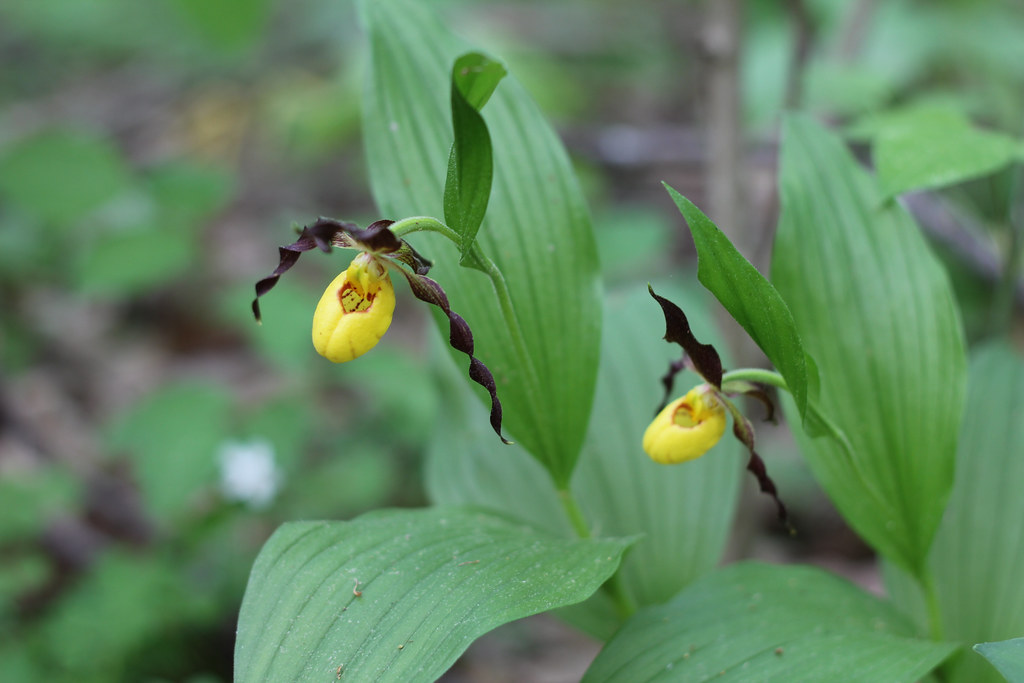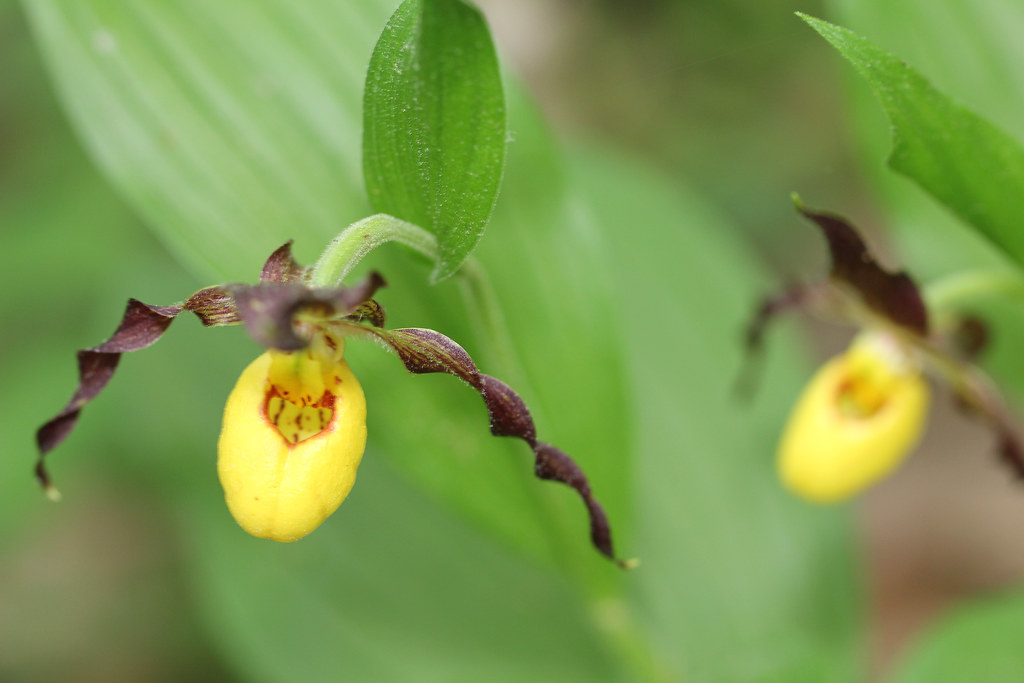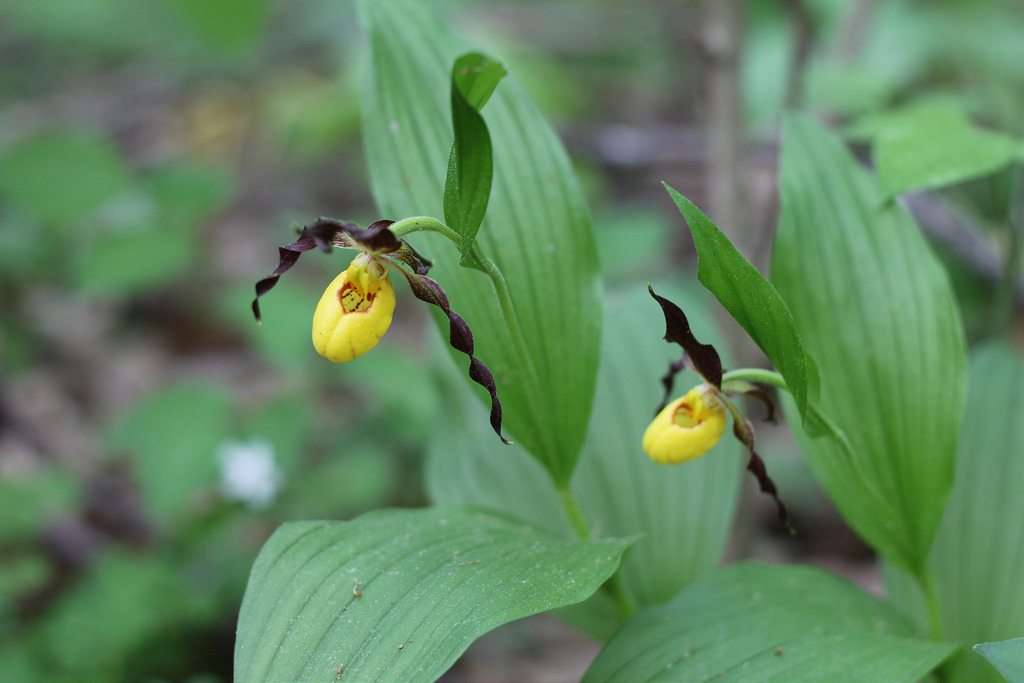I went over to Johnson County this evening to check on some lady slipper orchids that I try and monitor each year. These particular plants went missing for more than ten years. I refound them last year but I was not able to catch them in bloom, in fact I don’t think they did or the blooms were nipped by deer. This year however, things are different.


I have become increasingly convinced that these plants and others like them are increasingly at risk due to the high deer population densities in KS. Several years ago a group of about 8 flowering orchids I was monitoring in Johnson county were all nipped off during one night most likely by deer. I’ve watch one group of plant decline over the last 10 years to where it has not flowered at all for the past 4 and this year there is only one leaf emerged where there used to be 5 plants. I don’t know the normal cycle for these perennials but I am sure that repeated deer herbivory can’t be good. Perhaps it is time to try out a bit of a deer exclosure trial.
Here’s a note that I sent to the Kansas Ornithology Bird Listserv back on May 1, 2000 when I first found this particular orchid:
Since my wife had a plane to catch at 6:00 a.m., Sunday morning I decided to greet the rising sun at Weston Bend State park across the river from John S. The day-use areas open at 7:00 a.m. but I confess that I went on in and walked the ridge trail that goes south from the overlook. Birding was very slow. A gobbler was trying his luck off to the east but for the most part the woods were incredibly quiet. The morning started a bit breezy on the ridge but I could hear an occasional wood thrush in the ravines. I also encountered a single Baltimore oriole on the ridgeline that seemed a bit tentative with it’s calling. Once I turned off of the ridge and went down in the coves the birding picked up some but nothing to get too excited about. I had to remind myself that, like fishing, birding for me isn’t just the noting of migrants but the chance to be in the woods, slowing down and soaking it all in. After that, I heard a number of Kentucky’s (5) at various sites along the trail. Dave described Baldwin woods as deep woods. I agree but I’ve birded for years there and I find it much easier than Weston. Weston’s understory and tree height really seems to leave birding to the auditory variety. At any rate, further along the trail found a scarlet tanager, blue-grey gnatcacthers, indigo buntings, white-throated sparrows, blue-headed vireos, Nashvilles, Orange-crowned, B-W, YR’s and L. waterthrush. And of course the standard forest residents including Pileateds.
Later in the day, after a brief rain in the afternoon, I decided to try out southern Johnson County. I added Tennessee’s and a couple of summer tanagers to my morning count. The woods were full of calling birds and I was moving very slowly, having a great time. A group of Blue Jays were making a big fuss at the west end of the trail. As I approached I found out why. They were harassing (or playing with the mind) of a immature Cooper’s(brown plumage). The jays would call and move in closer to the point that the Cooper’s could take it no more. He (small Cooper’s) would then take off on a sortie after a chosen jay careening through the upper canopy. He could never quite build up the necessary wing speed like Cooper’s coming from a distance and the jays had no trouble avoiding him. He made at least 6 sorties from his roosts in the tall oaks but what I found amazing was that the Jays would always circle back into the general vicinity so I was able to stay put and watch the entire spectacle. The chosen Jay Prey would take off through the canopy in a direction while the others remained and contiued screaming at the Cooper’s. Then the Jay Prey would reverse direction in an evasive move which seemed to lead the Cooper’s back and another Jay would take over. The Cooper’s finally, seemed to loose some steam and just sit. He looked tired and his posture was not the erect, alert posture of a Cooper’s on the hunt. The Jays also seemed to loose interest at this point and just left. The woods were then very still–except for a Kentucky that continued to call on territory. I guess Kentucky’s don’t have much to worry about from a Cooper’s down in the understory. To wrap up the day I had too non-bird observations at the arboretum. The woods were so quiet (after the rain) that I surprised a racoon that took shelter in one of the cave-like fissures in the limestone bluff. The other was the highlight of the day. I found a yellow lady’s slipper orchid in bloom. Very nice. The migration event is just starting to heat-up.
